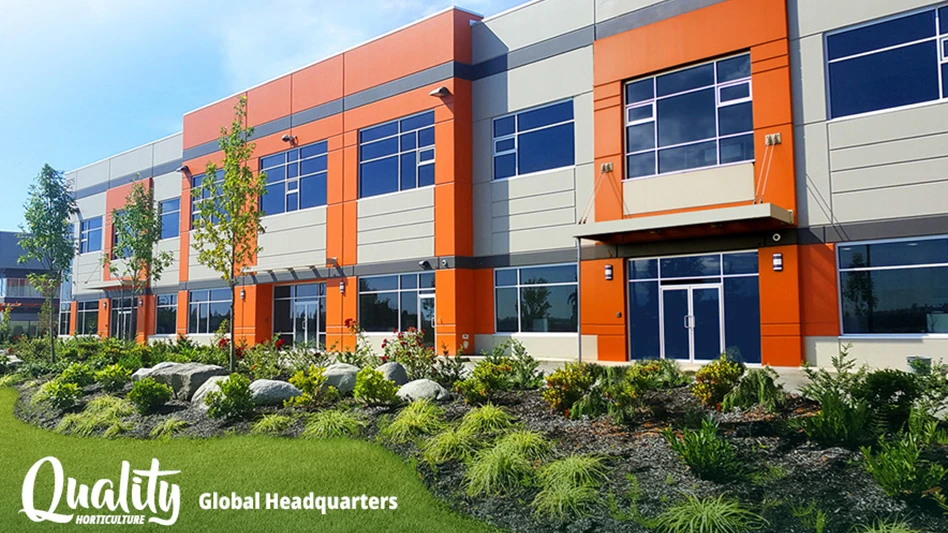|
In conducting energy audits for the USDA grant programs, I've noticed a number of areas where improvements can be made to hoophouses without much cost or effort. Many grants are also available to offset costs and lower the payback time. Making a few improvements before the cold weather hits will pay benefits in better plant quality, improved environment control and reduced energy consumption. Here are some significant ones.
Air inflation: To work properly, the two layers of plastic have to be completely attached on the four edges. Holes or tears should be taped. Any leaks will allow air to escape, and the plastic will be loose, allowing ripples to form during windy weather. These put stress on the endwall attachments. Separation between the two layers can be between 4 to 12 inches, without much difference in insulation effect.
Roll-up sidewall seals: Installing a permanent double wall polycarbonate or polyethylene panel between the last two hoops at each end of the sidewall will provide a good seal when the roll-up is lowered. This is important to avoid heat loss and keep air from getting underneath the plastic. The roll-bar should securely seal at the baseboard bracket or roll-lock to lessen wind flap and heat loss. Wind ropes should be checked occasionally for tightness.
Add a roof vent: To reduce electricity use, some growers are installing roof vents in their hoophouses. A 4-foot-wide vent on the summer leeward wind side should be adequate with roll-up sides. This allows heated air to escape out through the roof. I usually figure that fan ventilation uses about ½ kilowatt/hour per square foot of floor area per year, costing between $150 and $250. The cost of a motorized roof vent is about $10/linear foot. This would give a payback of four to five years.
Energy/shade screen: It is possible to add an energy/shade screen to a hoophouse. This will reduce heat loss during the heating season and heat gain during the summer. It is most economical in wider houses. It is usually installed as 8-foot to 12-foot movable panels between the truss bottom cords. It could also be installed across the hoophouse. The screen is most effective with tight sidewall seals. System cost is usually $3 to $4/square foot depending on the size of the hoophouse and the material used. The key to the payback is the length of time the hoophouse is heated, inside night temperature and fuel cost.

Insulated doors: Many hoophouses have poorly constructed doors. Some manufacturers supply steel tubing doors with polycarbonate glazing. These conduct considerable heat. Sliding doors are difficult to seal with brush-type astrogals. Infiltration and conduction losses can amount to about 100 gallons of propane or fuel oil/year with just a 3/32-inch gap around the perimeter. The best choice is a pre-hung steel insulated door with integral frame. Cost is about $300 for a 3-foot-wide door with a double glass half panel. Payback can be less than two years.
Drainage: Keeping rainwater out of the hoophouse is important for good working conditions and reduced disease problems. When building a new hoophouse, place the floor at least 8 inches above the surrounding terrain. In existing houses, install a swale along the sides to collect and direct the water away from the area. A 1-inch rainfall on a 30-foot by 100-foot hoophouse collects more than 1,800 gallons.
Heater make-up air: Fuel combustion requires adequate oxygen. Many hoophouse crops freeze each year due to the furnace being starved for air. Install a 4- or 6-inch diameter PVC pipe from outside through the side or endwall to the burner area to provide the air needed. The outside end should be above the snow line and be screened to keep out rodents.
Thermostat location: Electricians usually pick a convenient location to place thermostats, frequently on the endwall near the heaters or fans. We are providing the environment in the hoophouse for the plants, therefore the sensors should be in the plant zone near the center of the growing area. Mount them so that they can be raised or lowered depending on the size of the crop. Shade thermostats to reduce the effect of direct sunlight. Placing both heating and cooling system thermostats together will avoid overlap of equipment operation.
John Bartok is a regular contributor to Greenhouse Management and an agricultural engineer and emeritus extension professor at the University of Connecticut. He is an author, consultant and a certified technical service provider doing greenhouse energy audits for USDA grant programs in New England.
Have a question? You can write John at jbartok@rcn.com. |

.jpg)






